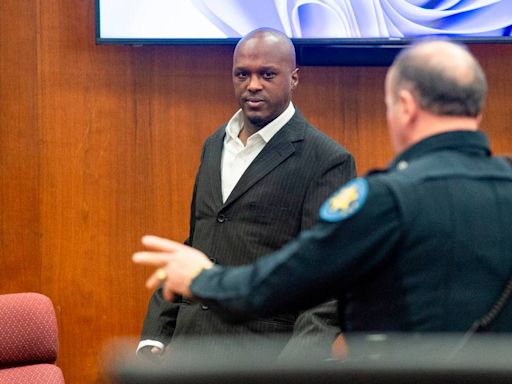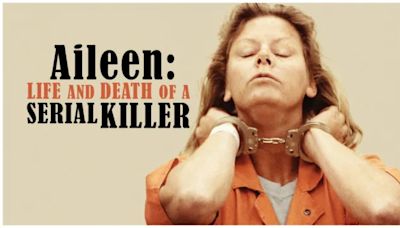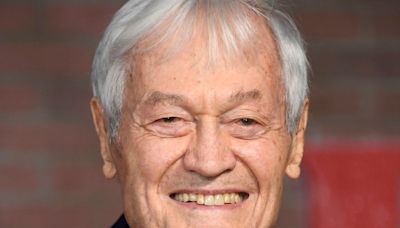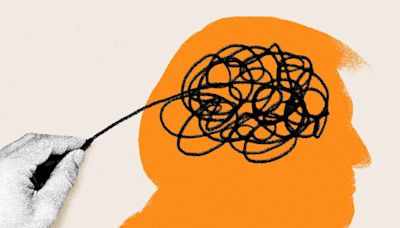Search results
Jun 12, 2023 · NYU Langone’s Parnia agrees that the brain’s reaction to the loss of oxygen is at least partially responsible for lucid experiences surrounding death. Between 2017 and 2020 Parnia led a study ...
Apr 2, 2024 · Between 1975, when Moody published Life After Life, and 1984, only 17 articles in the PubMed database of scientific publications mentioned near-death experiences. In the following decade, there ...
- Overview
- A multiphase and multi-site study
- Reports of transcendent experiences
- Biomarkers of clinical consciousness
- Survivors may need psychological support
•A new study on near-death experiences featured 567 men and women whose hearts stopped while hospitalized in the United States and the United Kingdom.
•Out of 28 survivors of cardiac arrest interviewed as part of the study, 11 recalled memories suggesting consciousness while undergoing CPR.
•Additional cardiac arrest survivors provided self-reports about what they experienced while their hearts stopped.
•Reports included perceiving separating from their bodies and meaningful examinations of their lives.
•Researchers discovered spikes of brain activity up to an hour into CPR.
While finishing his medical degree at the University of London in the mid-90s, Dr. Sam Parnia watched as doctors attempted to revive a man in cardiac arrest. As he stood there, Dr. Parnia wondered whether the patient could hear the medical staff as they worked to revive him. Dr. Parnia asked himself, “What is life? When does it really end?”
The study centered around 567 men and women who received CPR after their hearts stopped beating while at one of 25 participating hospitals in the United States and the United Kingdom.
When health practitioners began CPR on a patient whose heart stopped, researchers rushed to the scene, bringing along a portable electroencephalogram, or EEG, to monitor electrical activity in different parts of the brain, and near-infrared spectroscopy (NIRS) to measure oxygen saturation of superficial brain cortex regions.
Taking care not to get in the way of health practitioners performing CPR, researchers also clamped a tablet computer above the patient’s head. The tablet was connected to Bluetooth headphones which were placed on the patient’s ears.
The tablet projected one of 10 stored images onto the screen. After 5 minutes, the computer played a recorded voice saying the words “apple,” “pear,” and “banana” every minute for 5 minutes.
“So when we designed this study, we wanted to not only have brain monitoring systems, but also to have a system to look for possible unconscious learning,” Dr. Parnia explained.
Of 567 subjects, 213 or about 38% experienced sustained return of spontaneous circulation, meaning their pulse was restored for 20 minutes or longer. Only 53, or fewer than 10% of the participants, lived to be discharged from the hospital.
Of the 28 participants interviewed, 11 — or 39% — reported having memories during cardiac arrest. Two of the 28 participants could hear the medical staff working while receiving CPR. One participant recalled seeing the medical staff working and could feel someone rubbing his chest.
Using the near-death scale, six participants had transcendent experiences. Three participants reported dream-like experiences, which included a singing fisherman.
Six of the 28 participants interviewed remembered the experience of dying. These recollections included one person who heard a deceased grandmother telling her to return to her body.
“We characterize the testimonies that people had and were able to identify that there is a unique recalled experience of death that is different to other experiences that people may have in the hospital or elsewhere,” Dr. Parnia said, “and that these are not hallucinations, they are not illusions, they are not delusions, they are real experiences that emerge when you die.”
From the 126 cardiac survivors who provided self-reports about their experiences, five themes emerged. Some participants recalled feeling the impact of CPR on their bodies or hearing the medical team talk. Others recalled activities in the intensive care unit following CPR.
Other self-reports detailed an experience of death. Some individuals perceived they were heading to a destination. Others underwent an evaluation of their lives.
Of the 28 participants interviewed, not one described seeing the image depicted on the tablet when they received CPR or remembered hearing the auditory stimuli. When provided with 10 photos to examine, no participants identified the displayed image. Only one of the 28 participants chose the fruits named when the participants received CPR.
Fifty-three participants had interpretable EEG data. Researchers discovered spikes of brain activity, including so-called gamma, delta, theta, alpha, and beta waves emerging up to 60 minutes into CPR.
Some of these brain waves normally occur when people are conscious and performing functions like memory retrieval and thinking. According to the researchers, this is the first time such biomarkers of consciousness have been identified during CPR for cardiac arrest.
“We found the brain electrical markers of heightened […] lucid consciousness, the same markers as you get in people who are having memory retrievals who are having […] high order cognitive processes, except that this was occurring when the brain had shut down and would suddenly appear as a surge.”
Dr. Lance Becker, chair of emergency medicine at Northwell Health in New York and professor at the Feinstein Institutes for Medical Research in Manhasset, NY, who was not involved in the study, pointed out that Dr. Parnia measured brain waves and brain oxygen of the participants.
“So he was super scientific-y, but he’s also pretty out of the box,” Dr. Becker told MNT.
As a medical student, Dr. Becker said he was taught that people who were in cardiac arrest were unconscious.
Dr. Parnia, Dr. Becker argued, did not believe everything he was taught. Instead, he questioned whether the patients receiving CPR had awareness of what was happening in the room despite the fact that the patients showed no signs of consciousness. “He is a pioneer,” Dr. Becker said.
For Dr. Tom Aufderheide, professor of emergency medicine and director of the Resuscitation Research Center at the Medical College of Wisconsin, who was also not involved in the study, the presentation prompted him to give thought to how to respond to patients experiencing cardiac arrest.
“There needs to be a wider recognition of patient cognitive experiences during cardiac arrest among treating physicians and healthcare providers with [the] incorporation of this reality into the compassionate care of our patients,” he told MNT.
- Beth Jojack
Apr 1, 2016 · Pérez had landed at the ragged border between life and death, with a brain that had ceased functioning and would never recover—in other words, it was dead—and a body that could be sustained ...
- 6 min
- Robin Marantz Henig,Lynn Johnson
People also ask
Is there a line between life and death?
What is the difference between life and death?
Why is death still under the surface?
Is death permanent?
Mar 7, 2021 · After: A Doctor Explores What Near-Death Experiences Reveal About Life and Beyond, by Bruce Greyson, is out on 11 March (£16.99). Buy it for £14.78 at guardianbookshop.com Explore more on these ...
Dec 15, 2023 · The Blurred Line Between Life and Death. We think of life and death as clear cut — you're alive or you're not; your heart's beating or it isn't; your brain functions or it doesn't. But when you ...
Nov 20, 2019 · Brains resurrected after death, communications with people in comas and advances in cryogenics all suggest that life's end is less final than we thought. FOR the Egyptians, death was simple. You ...





